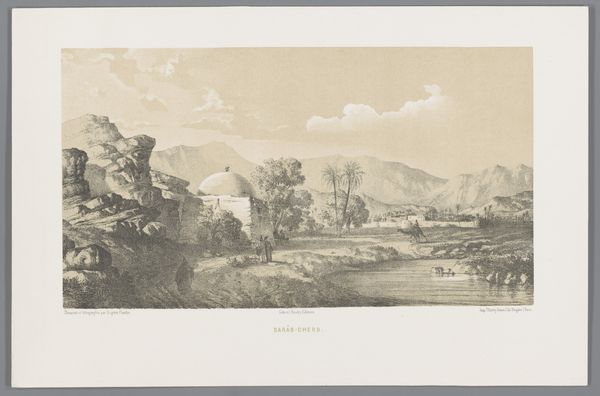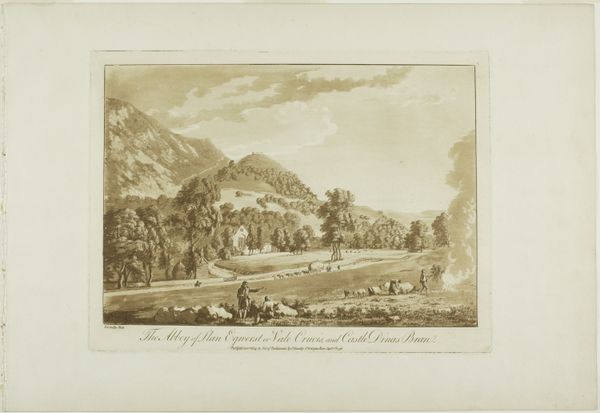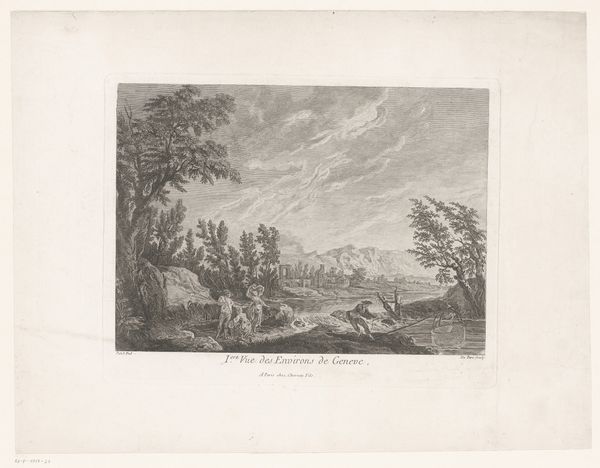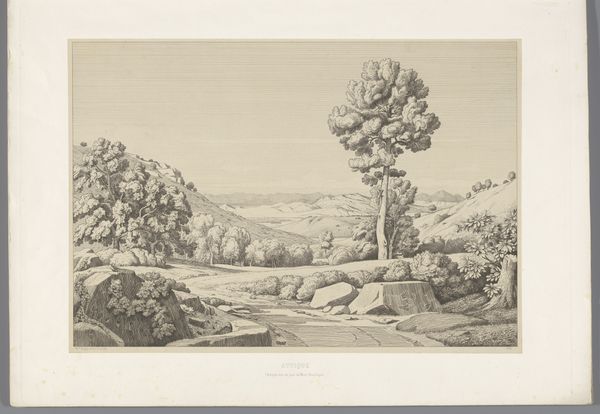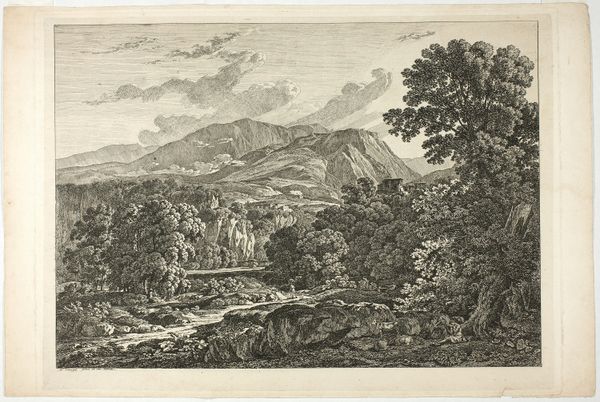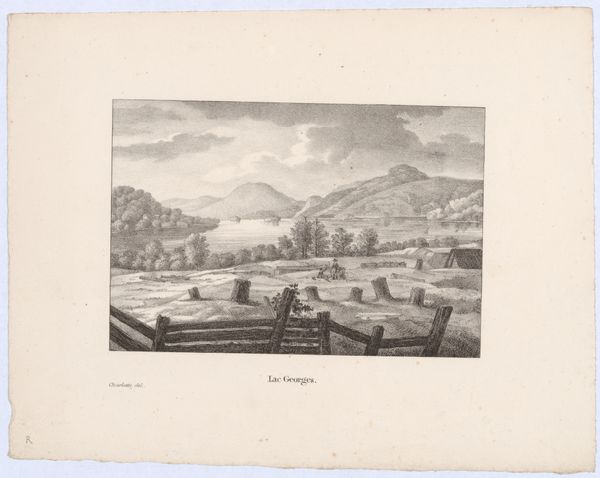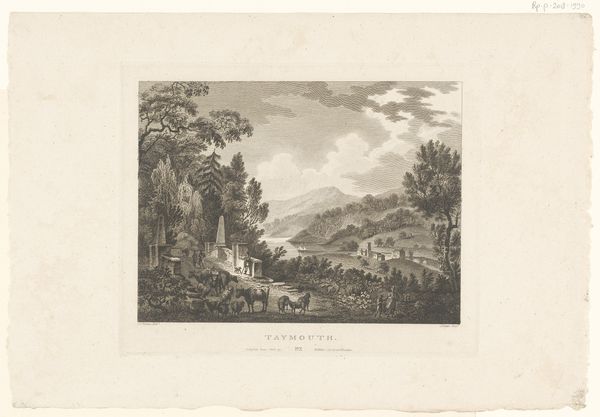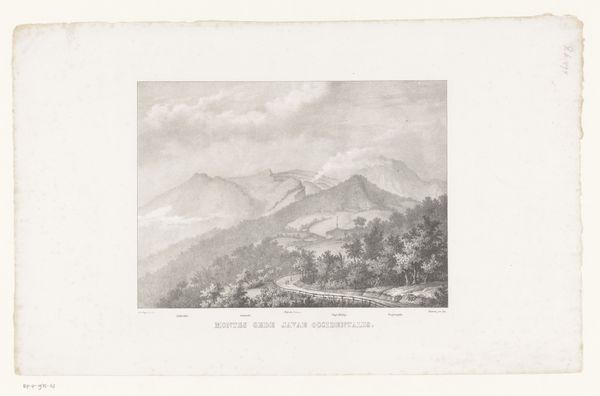
print, etching
#
neoclacissism
# print
#
etching
#
landscape
#
romanticism
#
cityscape
Dimensions: height 378 mm, width 462 mm
Copyright: Rijks Museum: Open Domain
Curator: This etching, titled "Gezicht op Vicovaro," roughly translates to "View of Vicovaro." It was crafted between 1780 and 1805 by Balthasar Anton Dunker and it is now held at the Rijksmuseum. The piece certainly reflects both Neoclassical and Romanticist ideals. Editor: There's a tranquility to it, a certain stillness. The cool, muted tones of the etching capture a sense of calm observation, while the human figures on the side give it a bit of dimension, of humanity. What drew you to examine it closely? Curator: The blending of styles intrigues me. While the meticulous details and orderly composition hint at Neoclassicism, there's also a romantic yearning for the sublime in the vast landscape. Thinkers like Rousseau at this time would've loved the simplicity and supposed purity of these types of rustic settings, divorced from industrial advancement. Editor: I see what you mean. The way the tiny town of Vicovaro sits perched in the hills almost seems… untouchable, preserved. However, I feel the perspective offered reinforces power dynamics. From whose point of view is this scene depicted, and who has the privilege to observe? Curator: It certainly invites a discourse on spectatorship, on who gets to narrate and consume such a vista. The etching form, reproducible and accessible, was starting to make art less exclusive during that era. Though still not fully democratic by contemporary standards, of course. Editor: I appreciate that you frame it like that; that’s important to remember. Perhaps the distribution of imagery like this contributed in some way, even if subtly, to expanding a public imagination of the self and its place in nature. Curator: Ultimately, "Gezicht op Vicovaro" captures a pivotal moment when the established order met emerging desires for individual expression. It provides a historical marker of evolving societal values, where nature moved from backdrop to character in our cultural consciousness. Editor: It has really highlighted, for me, the complexity of viewing historical landscapes: navigating that pull between appreciating aesthetic beauty and critically examining whose stories are visible within that scenery.
Comments
No comments
Be the first to comment and join the conversation on the ultimate creative platform.
